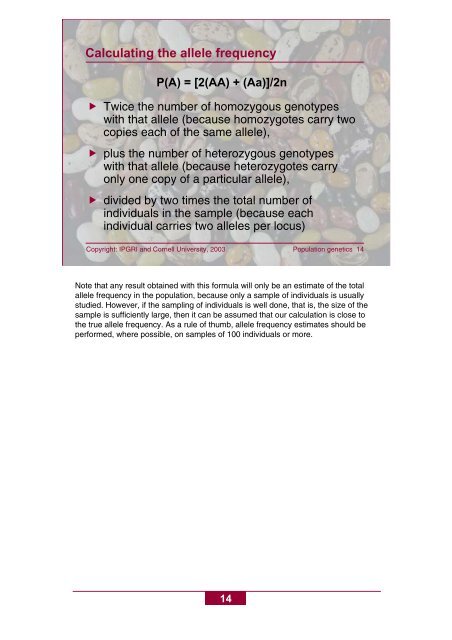Basic concepts of population genetics - Bioversity International
Basic concepts of population genetics - Bioversity International
Basic concepts of population genetics - Bioversity International
You also want an ePaper? Increase the reach of your titles
YUMPU automatically turns print PDFs into web optimized ePapers that Google loves.
Calculating the allele frequency<br />
P(A) = [2(AA) + (Aa)]/2n<br />
Twice the number <strong>of</strong> homozygous genotypes<br />
with that allele (because homozygotes carry two<br />
copies each <strong>of</strong> the same allele),<br />
plus the number <strong>of</strong> heterozygous genotypes<br />
with that allele (because heterozygotes carry<br />
only one copy <strong>of</strong> a particular allele),<br />
divided by two times the total number <strong>of</strong><br />
individuals in the sample (because each<br />
individual carries two alleles per locus)<br />
Copyright: IPGRI and Cornell University, 2003 Population <strong>genetics</strong> 14<br />
Note that any result obtained with this formula will only be an estimate <strong>of</strong> the total<br />
allele frequency in the <strong>population</strong>, because only a sample <strong>of</strong> individuals is usually<br />
studied. However, if the sampling <strong>of</strong> individuals is well done, that is, the size <strong>of</strong> the<br />
sample is sufficiently large, then it can be assumed that our calculation is close to<br />
the true allele frequency. As a rule <strong>of</strong> thumb, allele frequency estimates should be<br />
performed, where possible, on samples <strong>of</strong> 100 individuals or more.<br />
14

















